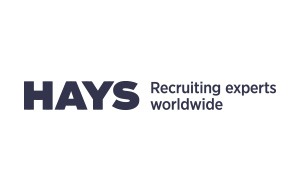
Gender diversity is a huge topic and there are many experts worldwide. The team here at Hays decided to take a look at the role of unconscious bias to see how deep seated attitudes play a role in determining the gender of hires – there were some fascinating findings…
When presented with two equally qualified candidates, one male and one female, we found that the man is more likely to get an interview.
Hays, together with Insync Surveys, asked 1029 hiring managers to review a CV then answer a series of questions about the candidate’s attributes, skills and probability they would be interviewed. 515 reviewed the CV of ‘Susan’ and 514 reviewed an identical CV but for one notable change – the name was altered to ‘Simon’.
The study found:
More recruitment experience means more bias
* Survey respondents who hire more than 20 people a year were more likely to interview ‘Simon’ over ‘Susan’ (65% vs 51%).
* For hiring managers who recruited less regularly, the gap between ‘Susan’ and ‘Simon’ reduced to just 3%
We prefer candidates just like us – but still hire more men
* Female respondents said ‘Susan’ matched 14 of the 20 attributes needed for the job extremely well, but ‘Simon’ only matched 6 of the 20 attributes extremely well.
* Men said ‘Simon’ matched 14 of the 20 attributes extremely well, but ‘Susan’ matched only 6 of the 20 attributes extremely well.
* Despite this, both genders were significantly more likely to interview and hire ‘Simon’ rather than ‘Susan’.
Public and not-for-profit bias towards women
* 31 % of public and not-for-profit respondents said ‘Simon’ had the leadership skills to do the job, compared to 42 % in the private sector.
* Public and not-for-profit sector respondents were also more likely to see ‘Susan’ rather than ‘Simon’ as having the technical skills (36 % vs 30 %) and leadership skills (39 % vs 31 %) to perform the role.
Organisations are still not serious (enough) about gender diversity
* 56 % of hiring managers said plans and resources need to be put in place or improved to help achieve gender diversity in their organisation.
* 44 % said their CEO is not serious enough about achieving gender diversity in their organisation.
* 39 % said their senior executives need to be better role models of diversity and inclusiveness.
This study shows that more needs to be done to educate hiring managers around gender diversity policies and to get commitment from senior executives to openly support gender diversity.
Certainly there are still questions to answer, but we hope our findings are a catalyst that sparks continued and important dialogue about gender diversity in Australia. See the full report at www.hays.com.au/gender-diversity



